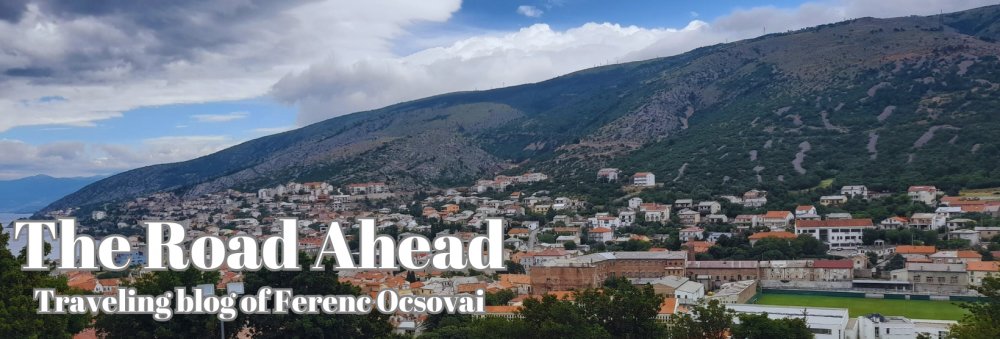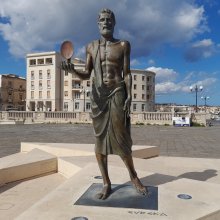
Maybe Catania is the second largest city of Sicily, but it is still just a small slice of the whole island. However, if you have some time, it takes less than one hour by train from there to travel to one of the most famous and iconic Sicilian cities. Before we would get to this point though, I would like to tell you a little bit more about the early history and the first dwellers of Sicily.
Getting to the past a little bit, the triangle-shaped Sicily was first inhabited by Sikan people and later, just for having a little bit of confusion, came the Sicel people, who are both in the contests for the title of Sicily’s namesake (most probably it was rather the Sicels). Then the next inhabitants were the ancient Greeks who established many colonies, therefore the South of Italy was called Magna Graecia in Latin by that time.
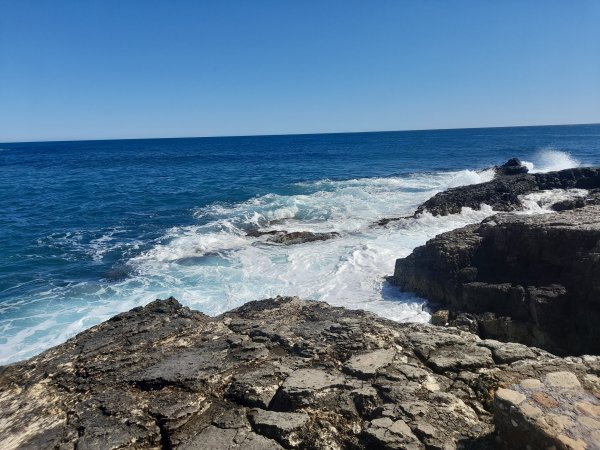
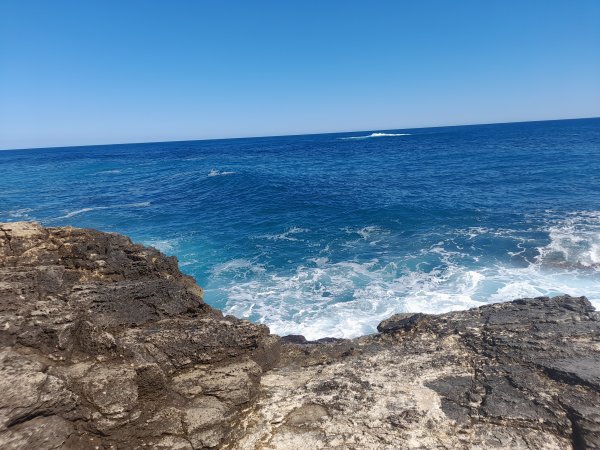
The Greeks brought not just their culture and language to Sicily but many myths as well: for example, Ulysses is said to have struggled between Scylla and Charybdis in the strait of Messina, between Sicily and the Italian Peninsula; as a matter of fact, the ferries working in the strait today also have the names of the two mythical monsters.
Apart from them, other monsters, the Cyclopes were considered to be the first inhabitants of the island before the Sikans – at least based on Thukydides’ works.
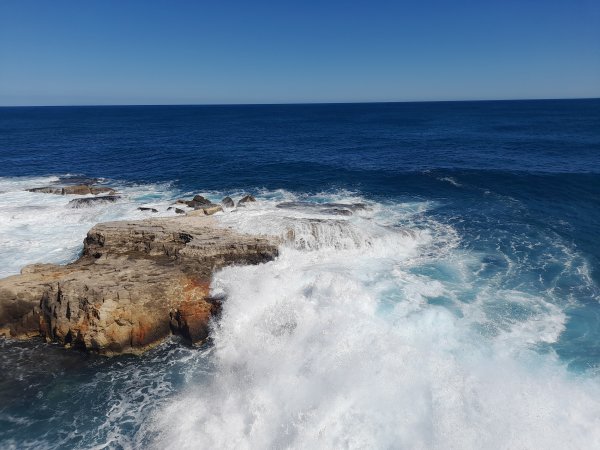
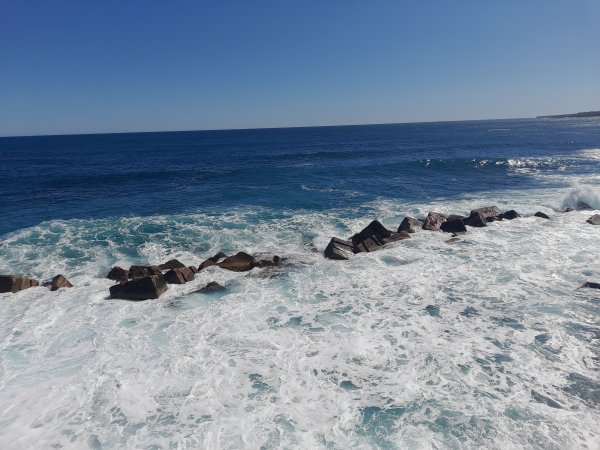
Etna is also considered to have a Greek (or Phoenician) origin in terms of its name, and its meaning is related to 'chimney', 'smoke' or 'fire' (like in the case of many volcanos, especially in Native American languages).
According to Greek mythology, Aetna was a nymph and also the arbitror when Demeter (in Latin: Ceres, patron goddess of Sicily) and Hephaestus (in Latin: Vulcan) were arguing over that who would rule the island. What is more, the ancient Greek city predating Catania was also called Aitne/Aetna for a while (Catania, the Latin version derives from an old Siculian word, katane).
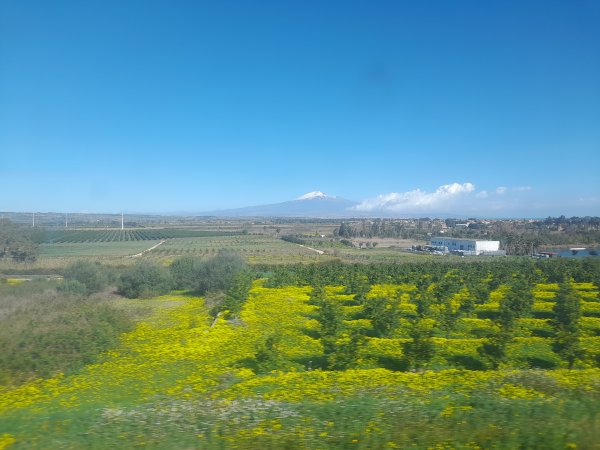
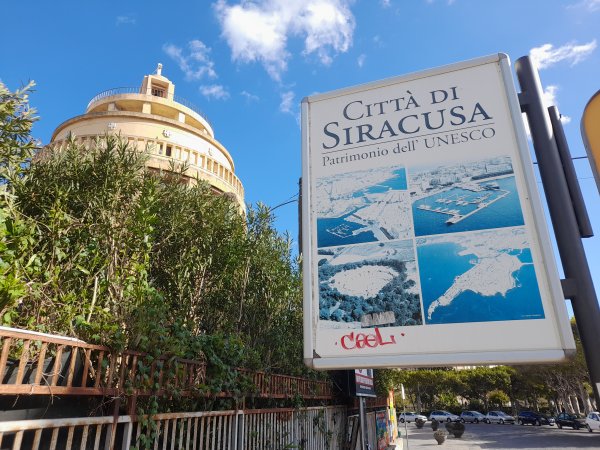
I have already mentioned one legend about Etna while writing about Theodoric the Great, but there is another one which might be familiar for more of you.
According to the ancient myths, god Vulcan’s blacksmith workshop was right under Etna – that was the explanation for its smoke and fire beneath. In modern Italian Etna is sometimes called Mongibello (in Sicilian: Muncibeddu) which comes from the Latin word Mulciber: an alternate name for Vulcan.
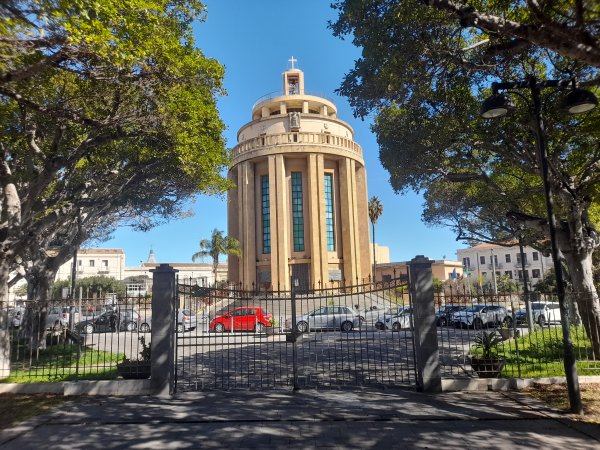
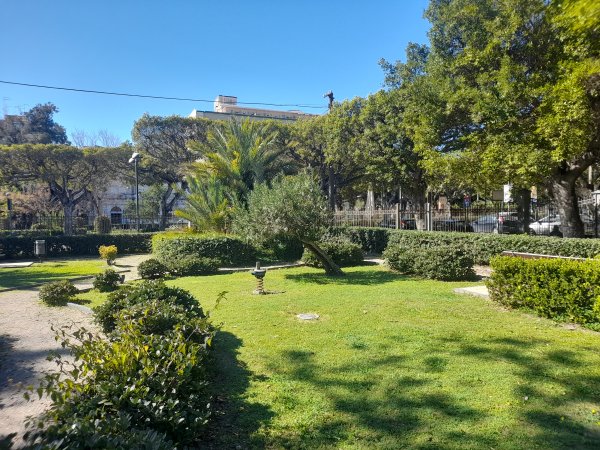
After the whole long story, it is time to confess that I finally saw Etna with my own eyes on the second day, when the weather was sunny, mild and just perfect for a trip. My destination was one of the most famous Sicilian cities, Syracuse (Siracusa) where I was going by train.
The railways were following a fabulous bay with lovely towns, green pastures, yellow flower fields and a crystal-blue sea, and, of course, the most precious moment was when the white and magnificent peak of Etna covered by snow appeared above the landscape.
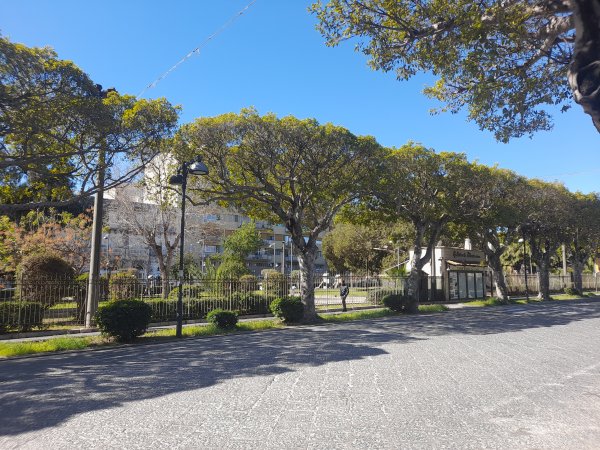
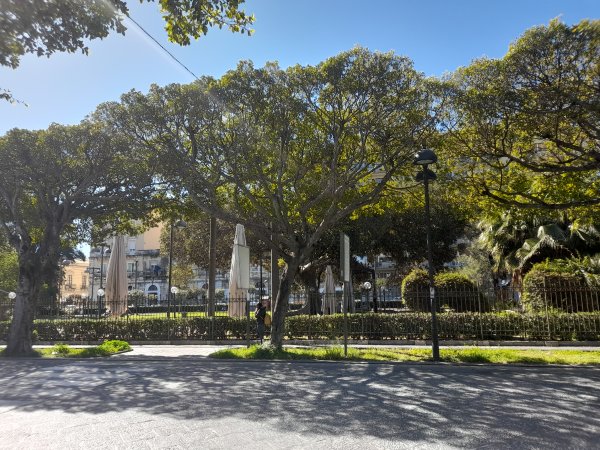
In spite of all of the dangers of settling down close to a volcano, it is not a question that Catania, Syracuse and the other surrounding cities have a spectacular nature all around due to the enormous slopes of Etna, which gives one an unearthly feeling.
You look at the volcano dominating the whole area from above and cannot stop guessing how gigantic it can indeed be once it is already so extraordinary and large from far away.
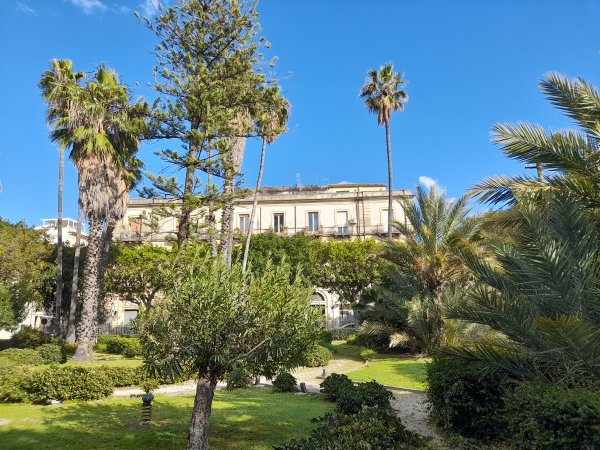
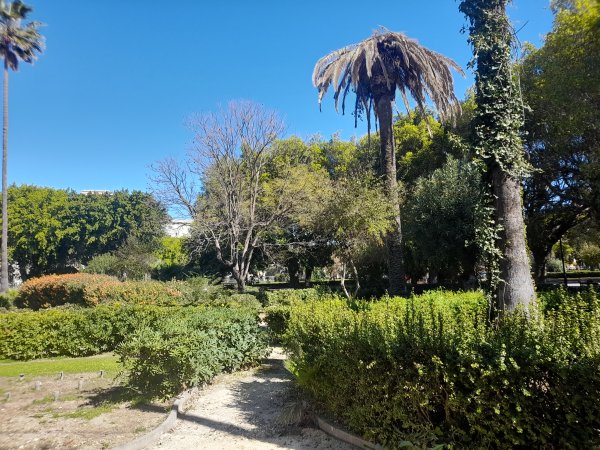
It was maybe the third or fourth time in my life to be touched by the intact beauty of a mountain peak: I experienced it once with Vesuvius in Pompeii, with Olympos while going from Athens to Thessaloniki by train, with High Tatras on a trip to Besztercebánya and with Triglav and the Julian Alps that I saw unfortunately only from the distance in Bled. All these moments were unique, yet I think if it was a competition, Etna would be the winner so far.
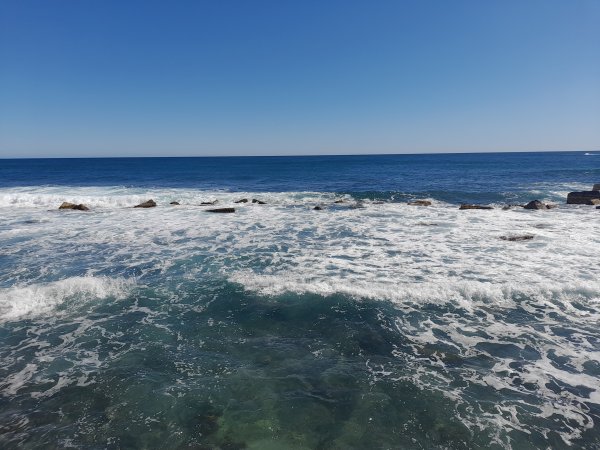
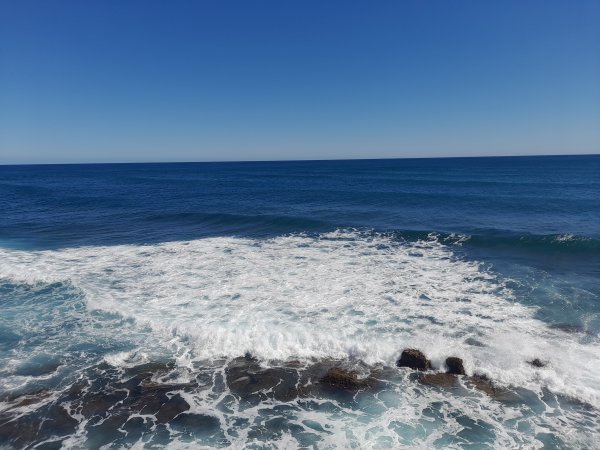
The ancient city of Siracusa was a Greek colony as well: its most famous inhabitant ever is surely Greek mathematician and scientist Archimedes (in Italian: Archimede), who discovered the buoyancy in hydraulics (Archimedes' principle) and the mathematical constant pi (π) connected to the perfect circle.
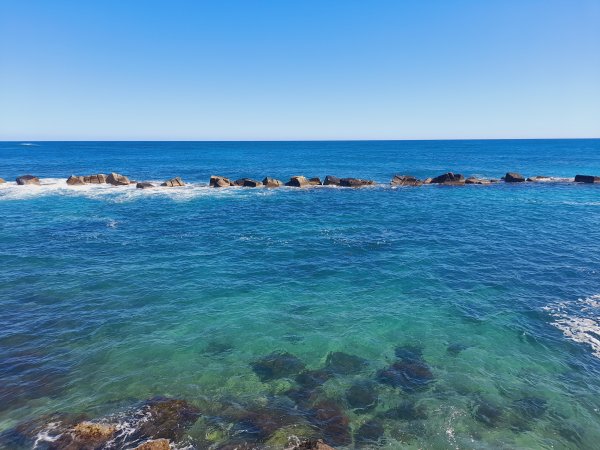
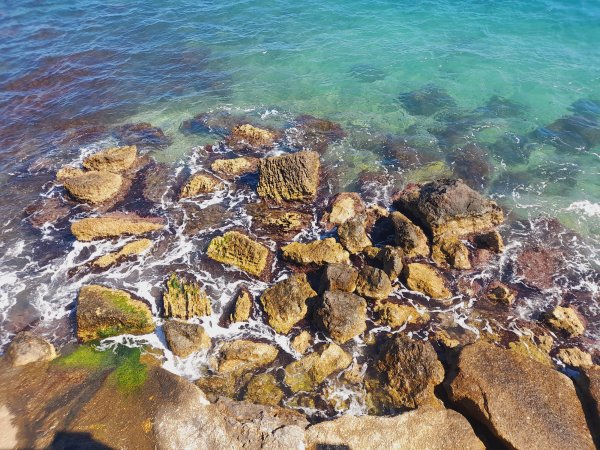
According to the legend, when Romans were besieging Syracuse by a fleet from the sea, the defenders of the city built giant machines, such as catapults designed by Archimedes in order to destroy the invaders.
Taking the advice of the scientist, Greek soldiers cleaned and polished their shields completely to make them bright and shiny, thus they could turn the sun rays against Roman sailing ships and burn them.
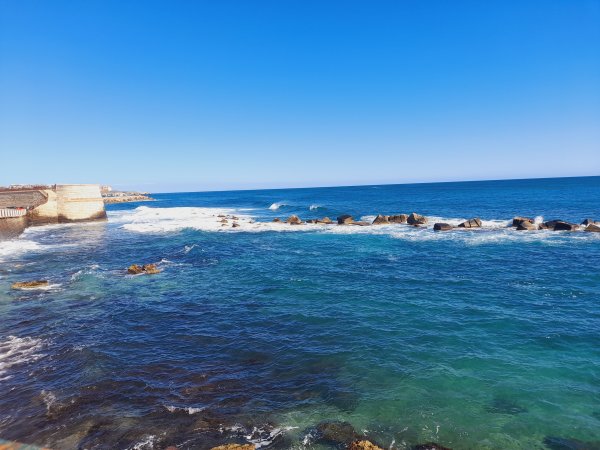
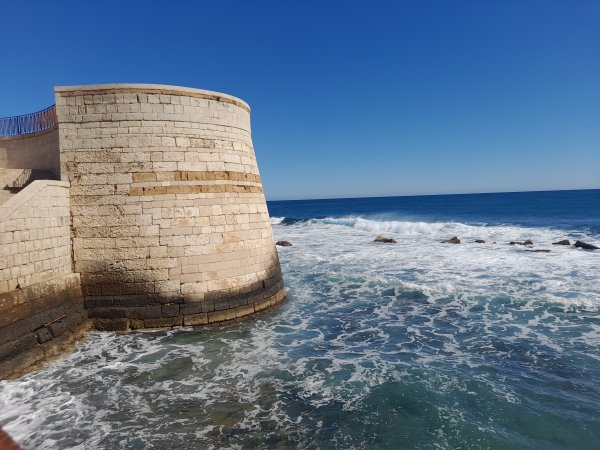
Finally, in spite of the determined attempts of the defenders, Rome conquered the city and all the other Greek colonies of Italy. It is said that when Roman soldiers began to loot the city and kill the citizens, they found Archimedes in the middle of some sort of calculation.
He was drawing circles in the sand with a stick and said 'Noli turbare circulos meos!' ('Don’t disturb my circles!' in Latin), but a brutal Roman soldier who had no idea about his unique talent stabbed him with a sword. This phrase is almost as famous by Archimedes as eureka ('I’ve found it') what he said by discovering the buoyancy during his bath.
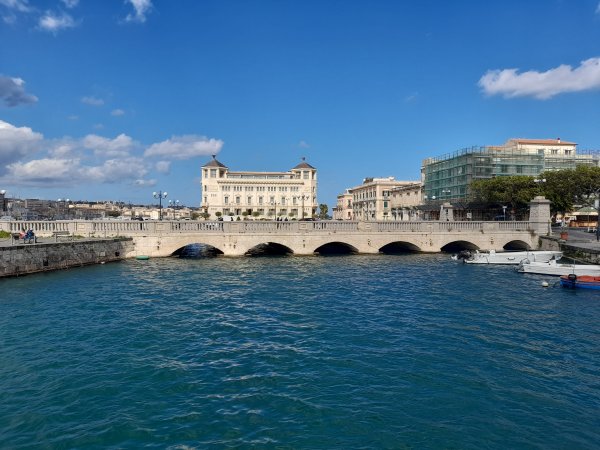
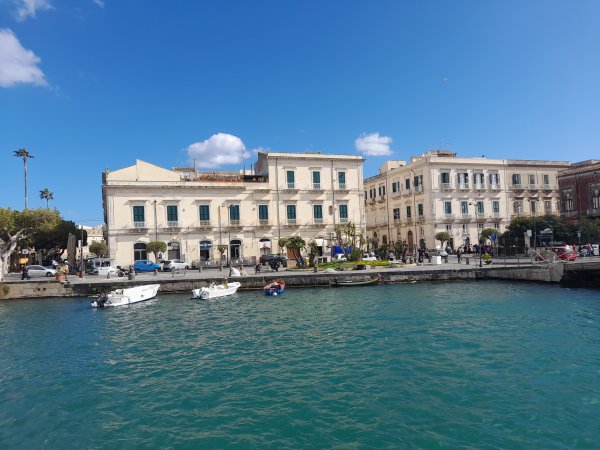
His tomb was never really found, but supposedly it is somewhere inside the cave of the Ear of Dionysos (Orecchio di Dionisio), even if the real case is not so adventurous as it was in the movie Indiana Jones and the Dial of Destiny (2023).
Unfortunately, I did not have enough time to enter the cave, but there were dozens of miraculous rocks and stones of different shapes everywhere, so one could indeed feel that they are back in the Ancient Times.
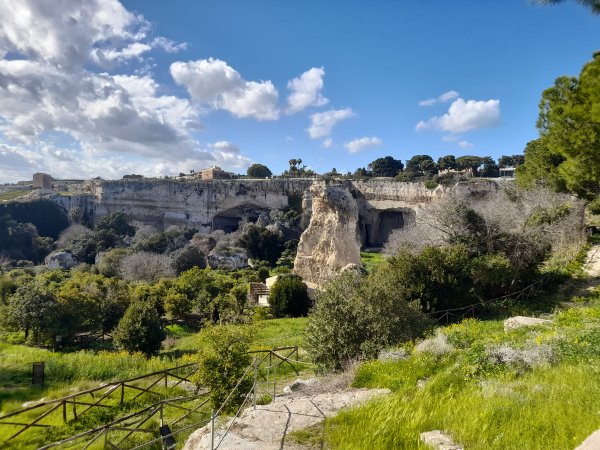

Nearby there was also an archeological park, the one of Neapolis ('Newtown'), which was a later district of Syracuse built later in the Roman times.
Unfortunately, both Neapolis and the the Roman theater were too far away from the center, but the good news is that if you do not have a lot of time, you can just go to one of the city parks close to the railway station and see some of the former columns and dweller’s houses.
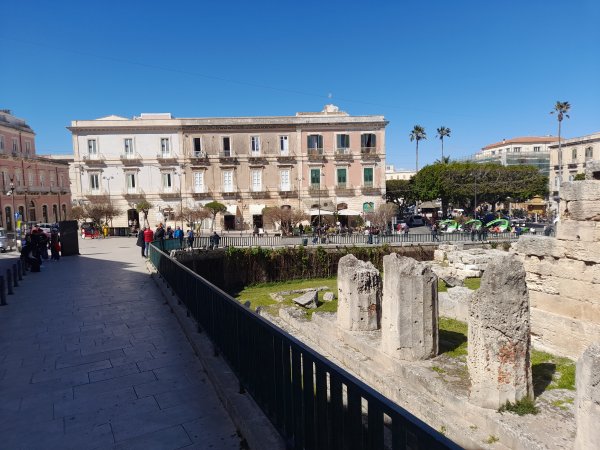
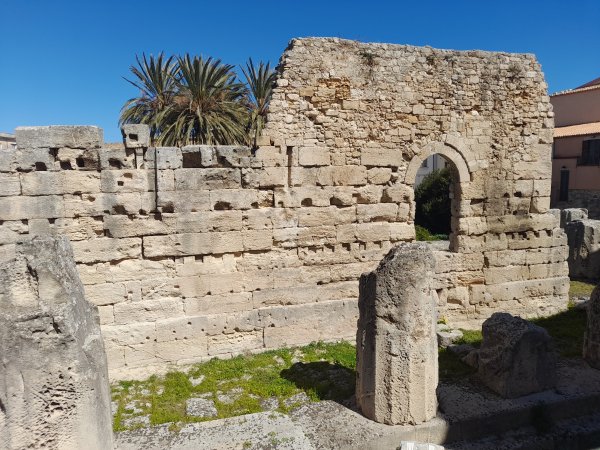
The true city center of the ancient Syracuse was slightly different from the contemporary center though. I must admit that ancient Greeks had not only a good sense of trade and strategy to choose the location, but also a taste of genuine beauty.
Ortigia, which is only one part of the whole city today, used to be the core of the ‘original’ Syracuse – but it is not the only reason why it is a real paradise for the visitors.
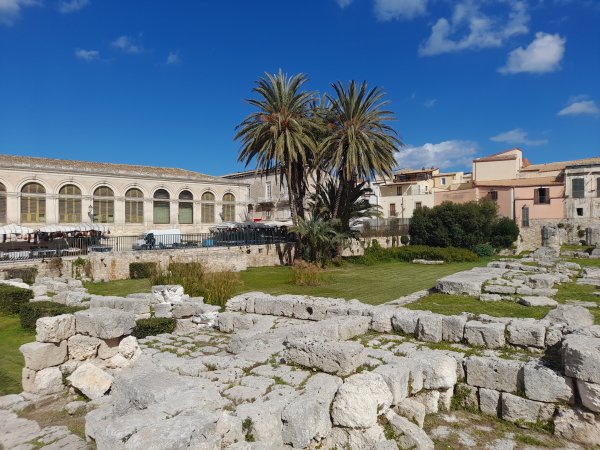
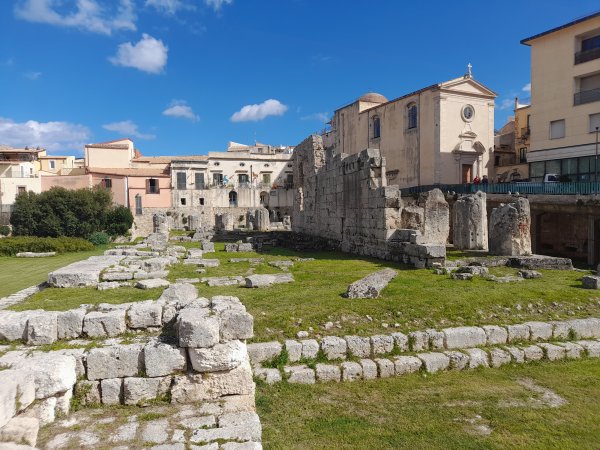
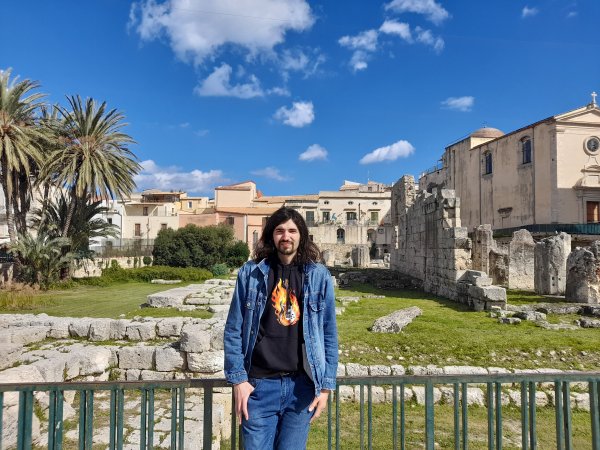
The island of Ortigia was already mentioned in ancient Greek myths: the most famous story among them, the one of Arethusa was even included in Ovid’s work Metamorphoses.
Arethusa was a nymph, daughter of sea god Nereus, who was escaping to the island from a a river god, Alpheus. Goddess Artemis (in Latin: Diana) tried to hide her loyal servant in various ways, but Alpheus was determined and followed her everywhere, even into the clouds.
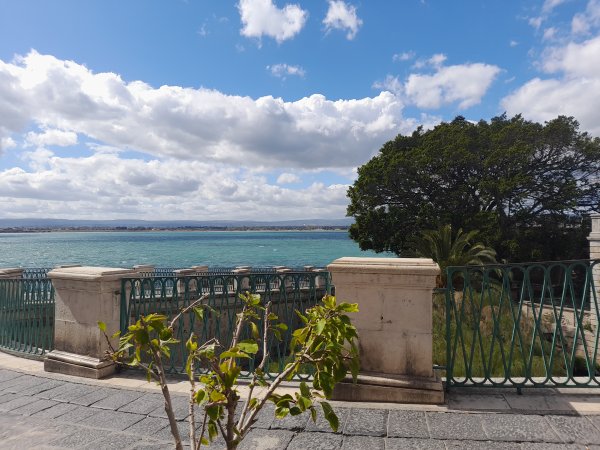
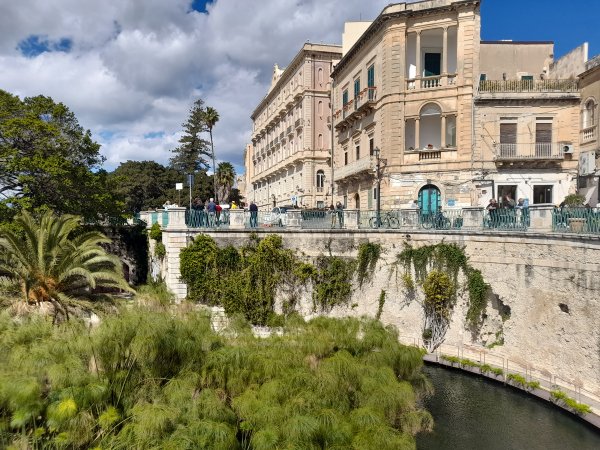
Therefore, Artemis transformed her finally into a stream – this is the myth about the creation of Arethusa Spring (Fonte Aretusa), a charming natural fountain located in Ortigia.
The spring lies on the seaside, and is a home for swans, ducks and papyrus plants. As a matter of fact, Alpheus, who was originally a hunter, did not give up either: he turned himself into a river to find the spring which was his desired nymph before.
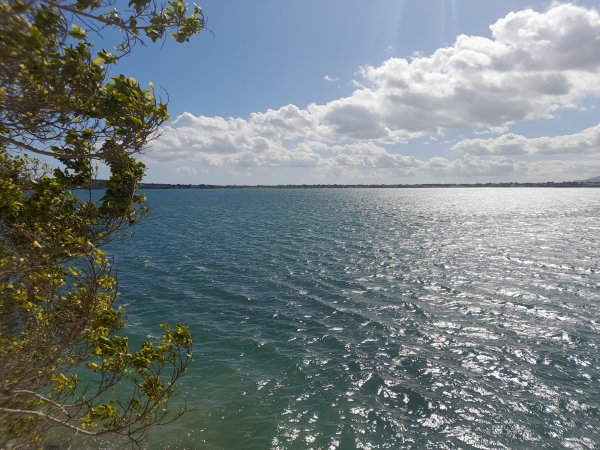
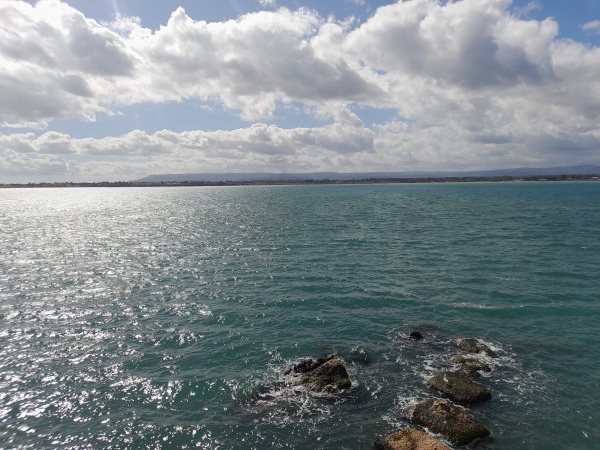
Artemis herself also got its monument on the island: that is La Fontana di Diana, a mesmerizing fountain on Piazza Archimede, where the goddess is surrounded by her other servants: nymphs, mermaids and young men riding on fish and on hippocamps.
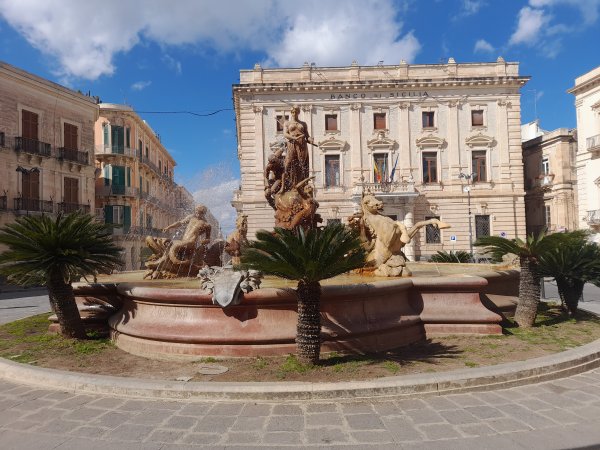
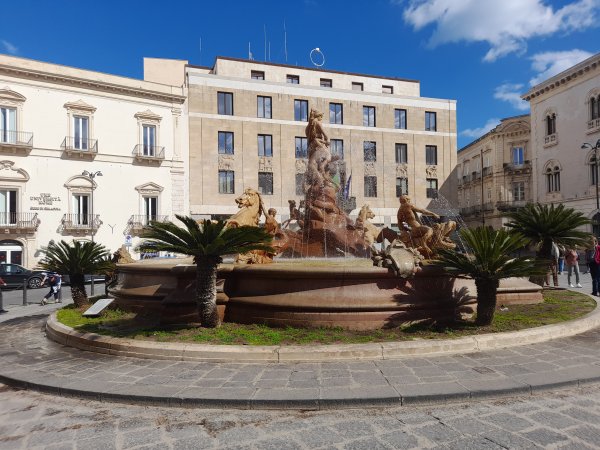
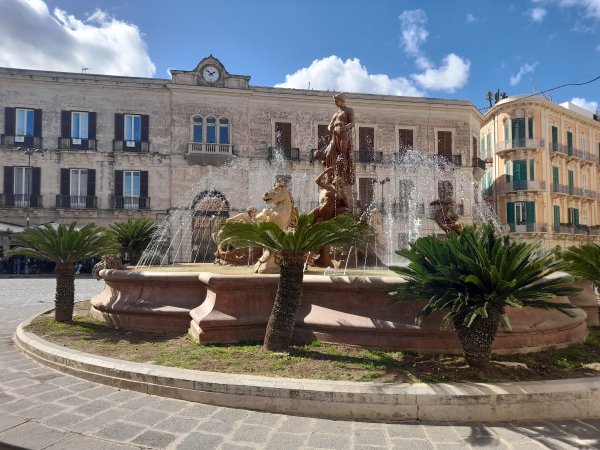
The most iconic sights of Ortigia are obviously the Metropolitan Cathedral (Duomo di Siracusa) and the ruins of the temple of god Apollo (Tempio di Apollo), but there are dozens of other churches and palaces everywhere.
Unlike stereotypical big Sicilian cities, such as Catania, Syracuse is clean and organized everywhere: walking in the narrow streets and discovering the Mediterranean vibes can be a wonderful outdoor activity on its own, and it was nice to remember port cities like Piran in Slovenia, Korfu in Greece or Tabarca in Spain where I felt something similar.
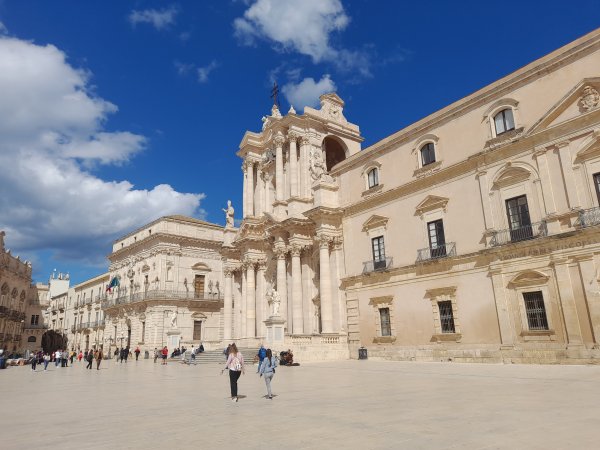
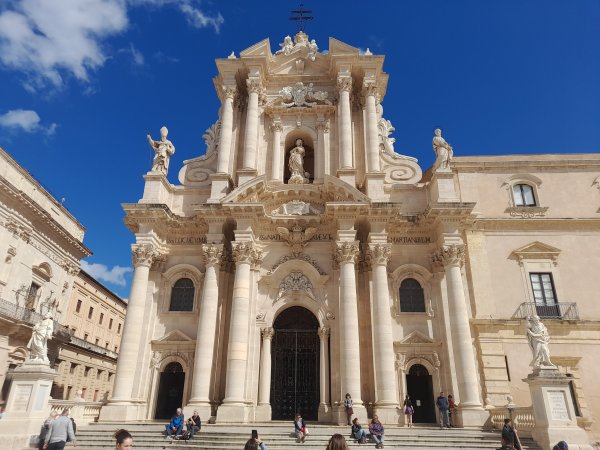
However, you should definitely go around Ortigia by doing a circle along the shore: then you will notice Muelle, the long pier of the island with enormous rocks, and fortresses like the elegant bastion of Forte San Giovannello or the giant walls and main gate of Castello Maniace, a typical seaside fortress on the southern end of the island.
The restaurants, just as in Catania, offer plenty of seafood and pasta, different kinds of arancino, toasts and traditional Sicilian wine, while the souvenir shops are obviously full of Teste di Moro, Cyclopses and trinacria-like heads of Medusa.
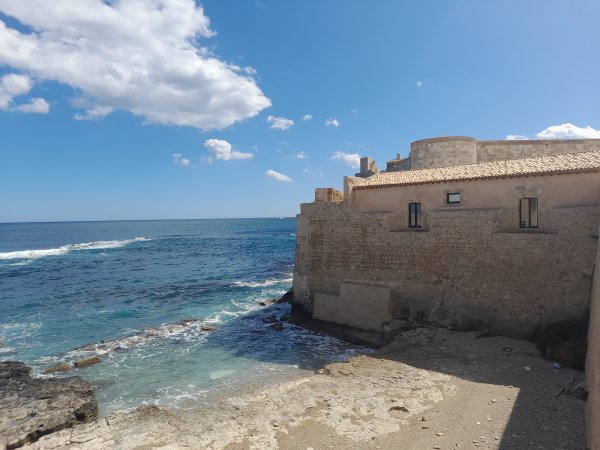
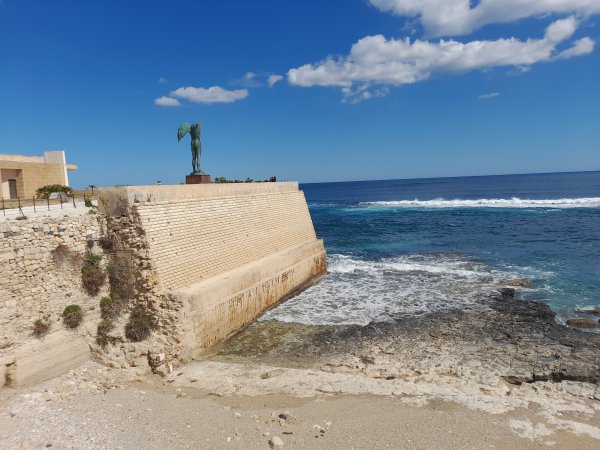
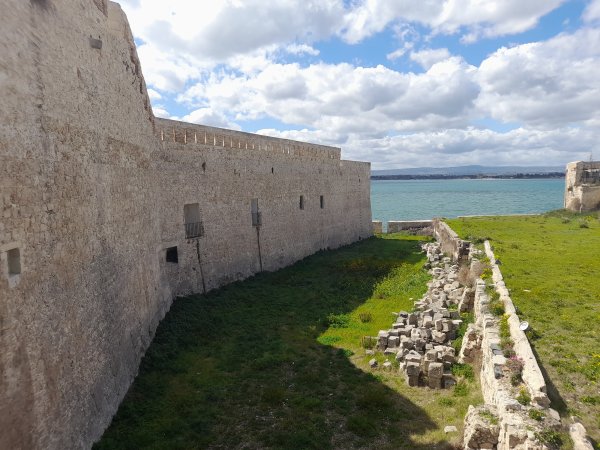
There are also many hidden places to go for a bath or sun bath or just to admire the pure waves of the sea and the blue horizon in the distance.
They are not typical sandy beaches but rather the rocky ones like in Naples, Koper or Trieste, and one cannot stop envying the locals a little bit for having the opportunity to be able to just go out and lie down on the shore freely anytime they want.
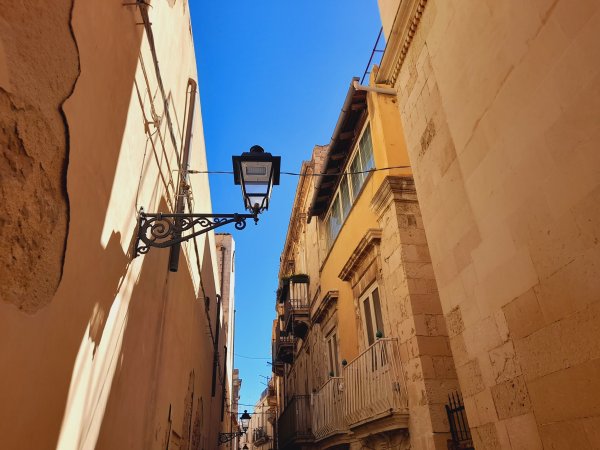
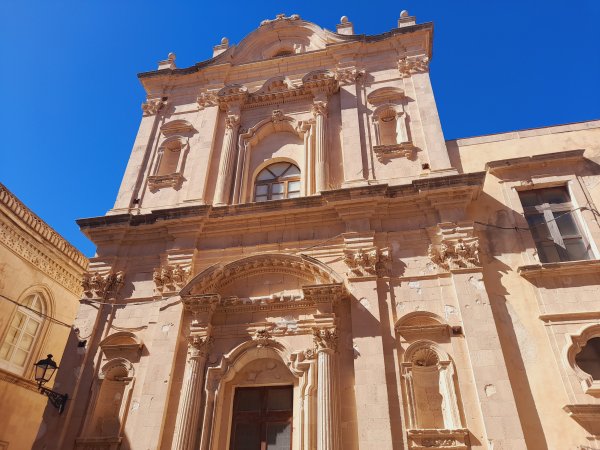
Last, but not least, on your way to Ortigia don’t forget to greet our old friend Archimedes who has a statue near the bridge; the modern city also hosts a statue of the Greek letter Pi to remember one of the earliest and greatest discoveries in the world of maths.
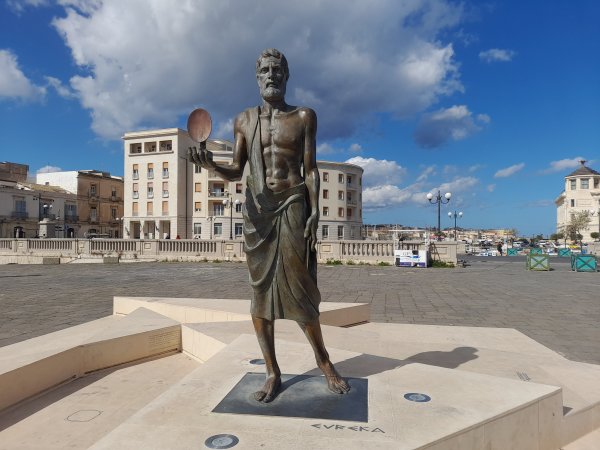
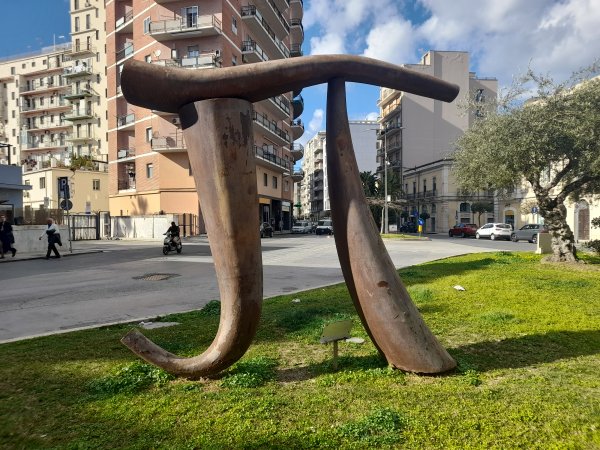
Syracuse is definitely a smaller place than Catania, but after talking to other tourists and having my own consequences I realized that it does not mean that there are less things to do; what is more, I think Syracuse is more popular than Catania and it requires a whole day, not only a couple of hours to get know it.
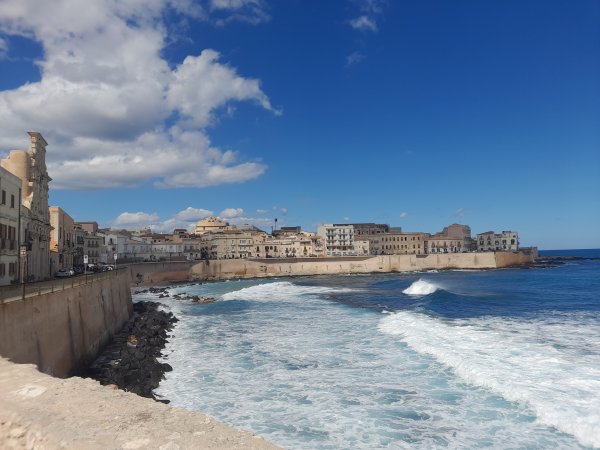
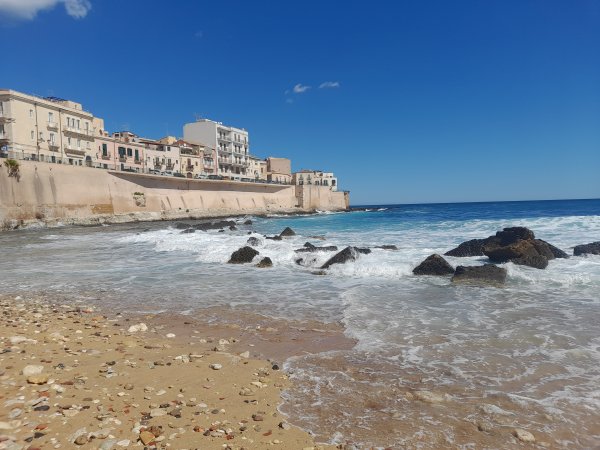
Comparing my two trips to Sicily so far, it was very interesting to me to see two different faces of the island. In spite of all the similarities, I remember Palermo more like a city with monumental architecture a bit similar to the classical Italian vibes with all the facilities a regional capital needs.
However, Catania was somehow more authentic to me and felt closer to the local spirit I was looking for. And then we got Monreale and Syracuse, the two other cities I know, which both had different characteristics too.
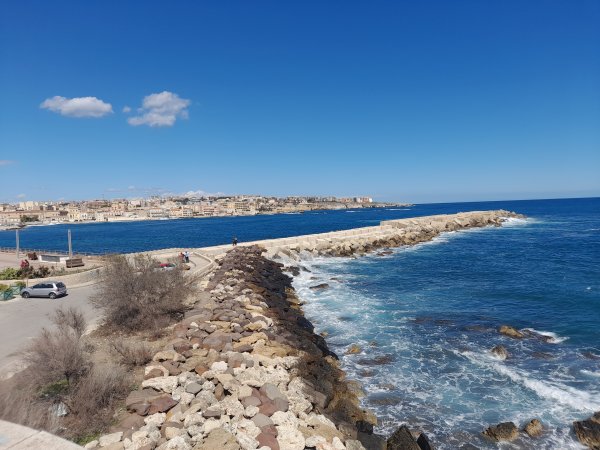
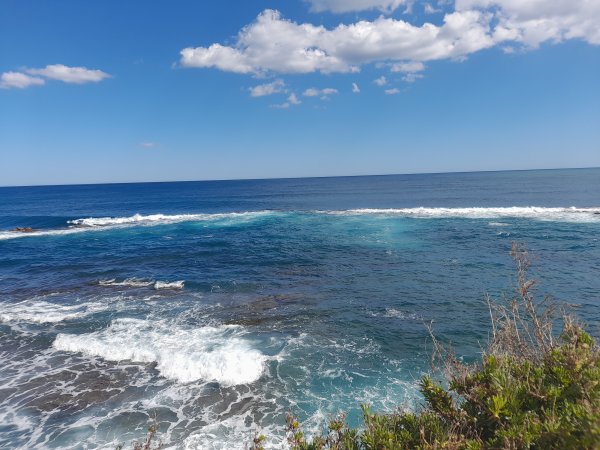
I am still really impressed on how many wonders and secrets this famous island has. Although its territory is not even the third of my country's, its natural and cultural heritage, with all the customs, meals, folklore figures and music I described is just unmatched and incomparable.
I did not even go to the real countryside to have deeper encounters with Sicilians, but I had such a feeling of being welcome that I do not feel during all my journeys.
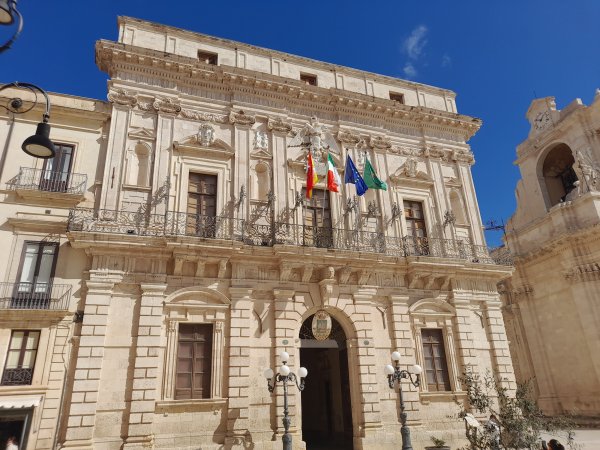
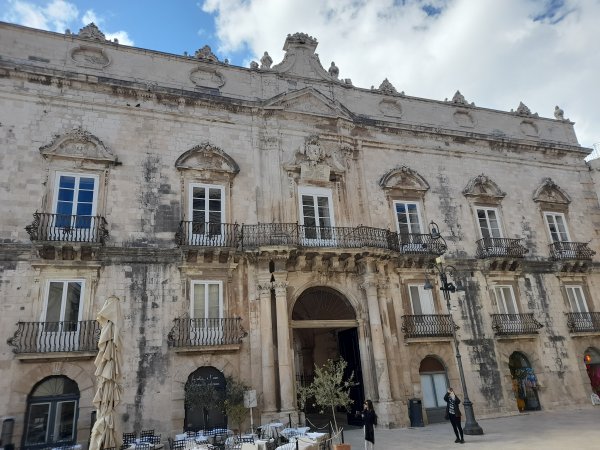
Experiences like that indeed changed my point of view, because I used to be the kind of person who always wanted something new and different.
I asked myself various times in the past: ‘why to return to known things, if you can explore a new city, new book or new piece of music?’ Well, I am still not sure about the answer. Sometimes returning to nice, old things can be an individual progress as well, and rushing into the new and different can be a blind alley, if one just escapes to that.
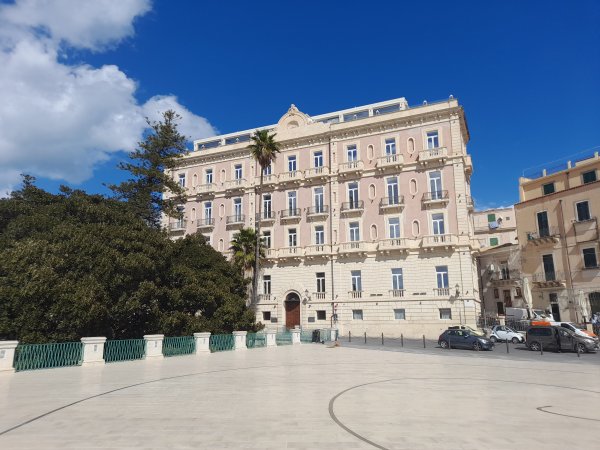
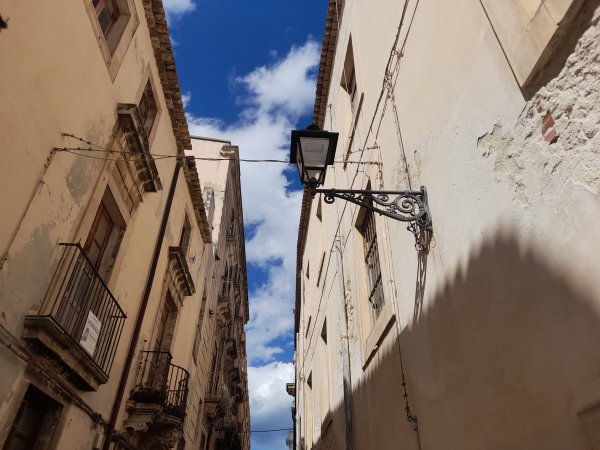
I will need to go back to Catania and maybe share this atmosphere also with others. Not only because Taormina, Messina and Ragusa are still waiting for me in East-Sicily, but also because the kingdom of Mount Etna owns such a rare magic that one should not be surprised that ancient people considered the place as a gift from the gods.
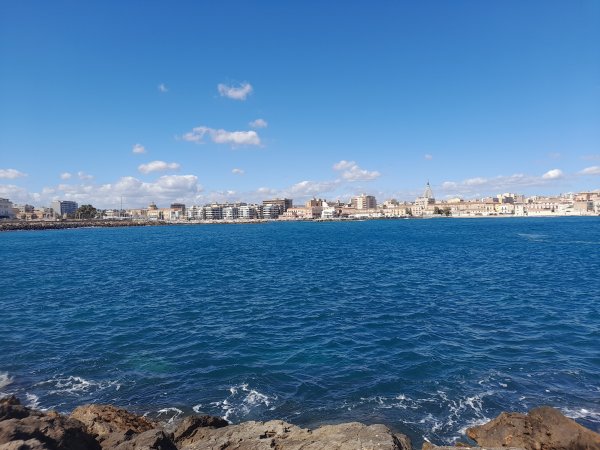
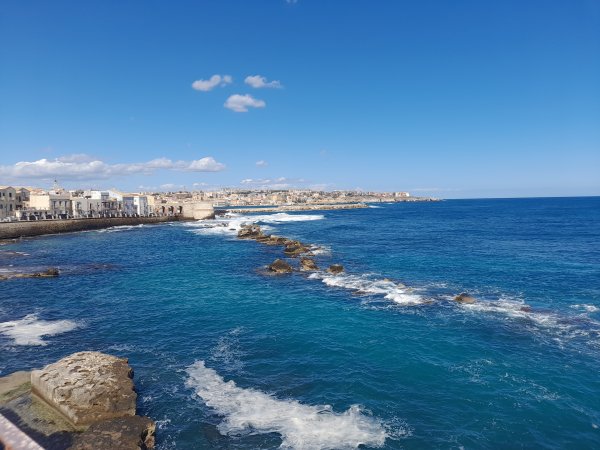
In Sicilia si piange tre volte: quando arrivi quando te ne vai e... quando ti pesi – I would like to finish my words with these funny Italian saying about Sicily, which means that if you go to Sicily, you cry three times: when you arrive, when you leave and when you measure your weight afterwards.
I could understand it even before Catania of course, but I think this saying opens up a completely new dimension if you check it out yourself and go there.
